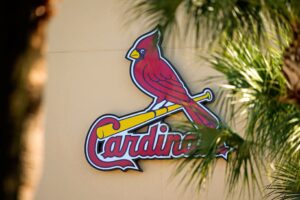As revenue has continued to climb in Major League Baseball, so have expenses. The competitive balance tax is no exception, as 2016 was a record-setting year.
Record Six Franchises Hit With Competitive Balance Tax Bills
According to the Associated Press, the Boston Red Sox, Chicago Cubs, Detroit Tigers, Los Angeles Dodgers, San Francisco Giants, and New York Yankees all received competitive balance tax bills on Friday from Commissioner Rob Manfred‘s office, due to their 2016 payrolls exceeding the $189 million threshold. The six teams surpasses the previous record of four teams, most recently achieved in 2015.
The Dodgers and Yankees paid a 50 percent tax on their overages because it’s the fourth and 14th consecutive seasons, respectively, that they have been over the threshold. They were charged sums of $31.8 and $27.4 million.
As teams which are over the threshold for the second consecutive season, the Giants and Red Sox paid a 30 percent rate. Those amounts came to $3.4 million and $4.5 million, respectively.
The Cubs and Tigers exceeded the threshold for the first time, and thus paid a 17.5 percent tax which came out to $2.96 and $4 million, respectively.
How the Competitive Balance Tax Works
The competitive balance tax should not be confused with baseball’s revenue sharing system, which is designed to take money from more profitable teams and redistribute that wealth to keep less-profitable teams operating in the black.
The big difference is that the combined $74.06 million reaped from the competitive balance tax this year is not dispersed to other MLB franchises, but rather sponsors player benefits and the league’s designated industry growth fund. The tax is labeled as a competitive balance device because it is intended to discourage more lucrative teams from out-spending their less lucrative counterparts by large margins, although it isn’t a traditional “Robin Hood” tax.
That’s about to change slightly, however. As part of the newly-ratified collective bargaining agreement, a portion of the tax will also go toward the players’ individual retirement accounts, and a smaller amount will also go toward teams not over the threshold beginning in 2017. While the thresholds are scheduled to rise each season in the new CBA, there will be a rate hike as well.
Changes in 2017 with the New CBA
Next season’s threshold is set at $195 million, eventually increasing to $210 million for the 2021 season. The penalty for first-time overages becomes a 20 percent cut of the amount over that threshold. Teams over the threshold for a second consecutive season will pay 30 percent, and teams over the threshold for three or more consecutive seasons will pay 50 percent. If a team is at least $40 million over the threshold, it will incur an additional surtax. That surtax adds another 42.5 percent for first-time overages, and 45 percent for teams that have surpassed the threshold in consecutive seasons.
Theoretically, then, if any of the teams that received bills this season have 2017 payrolls of at least $235 million, they would receive tax bills for 95 percent of the amount that they are over the threshold. There’s another change that may enhance the chances of that happening; starting next year, contracts of players outrighted to the minor leagues will count toward the payroll for these purposes.
Baseball-Reference.com‘s current projected 2017 salary figures have Boston, Detroit, Los Angeles, and New York over the threshold but under the surtax level. There is a lot more offseason yet to be had, however. Fans will soon find out if the steeper tax rates keep 2016 the record for teams paying into the competitive balance tax, or if the increased cost is just another amount that teams are willing to pay for success.
Main Photo:






